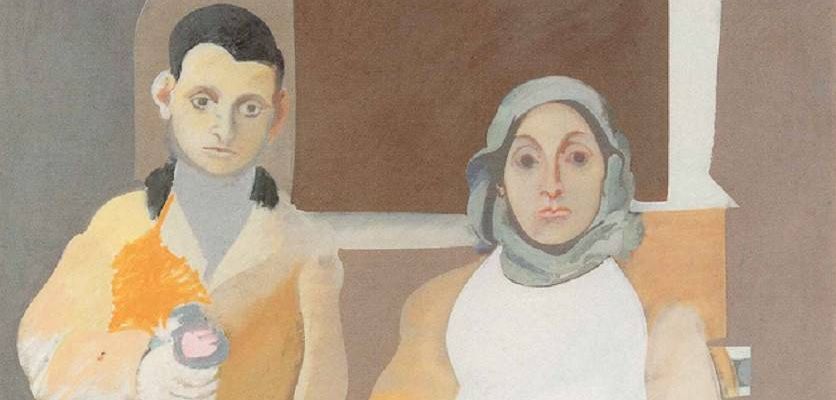The Artist and His Mother
Widely heralded as one of the greatest portraits of the 20th century, much has been analyzed, debated, scrutinized, and theorized about. It is, without a doubt, Gorky’s ultimate masterpiece. No list or discussion on his art would be complete without reference to the irreducibly beautiful painting that revealed to the world his deft hand and brilliant genius, while showcasing the deep anguish and void in his heart. (c. 1926-36, the painting now rests at the Whitney Museum of American Art).
Based on the lone surviving photograph from Gorky’s youth, the painting features a young Gorky standing beside his mother like a bridegroom, clasping flowers; their pale skin is ghostlike; her eyes, though deeply black, are devoid of emotion, like she is already dead; her white apron makes her appear statue-like; and their searching gazes adds a psychological intensity that goes beyond the photograph’s depiction. In some areas, it seems like an unfinished painting—of an unfinished memory.
To say this is simply an ode to his mother—who starved to death in Gorky’s arms, right after they survived the Genocide together—would be as incomplete as the memory of his mother itself. Gorky spent over a decade on the piece and, when it was finished, still could not let go—even beginning a second version. The Artist and His Mother is powerful for many reasons, not the least of which because of its pioneering abstractionist style, and the personal and cultural loss, suffering, and heartbreak that it conveys.
Like this profile? Any favorite works? Additional references?
Send a messageJoin our community and receive regular updates!
Join now!



Attention!